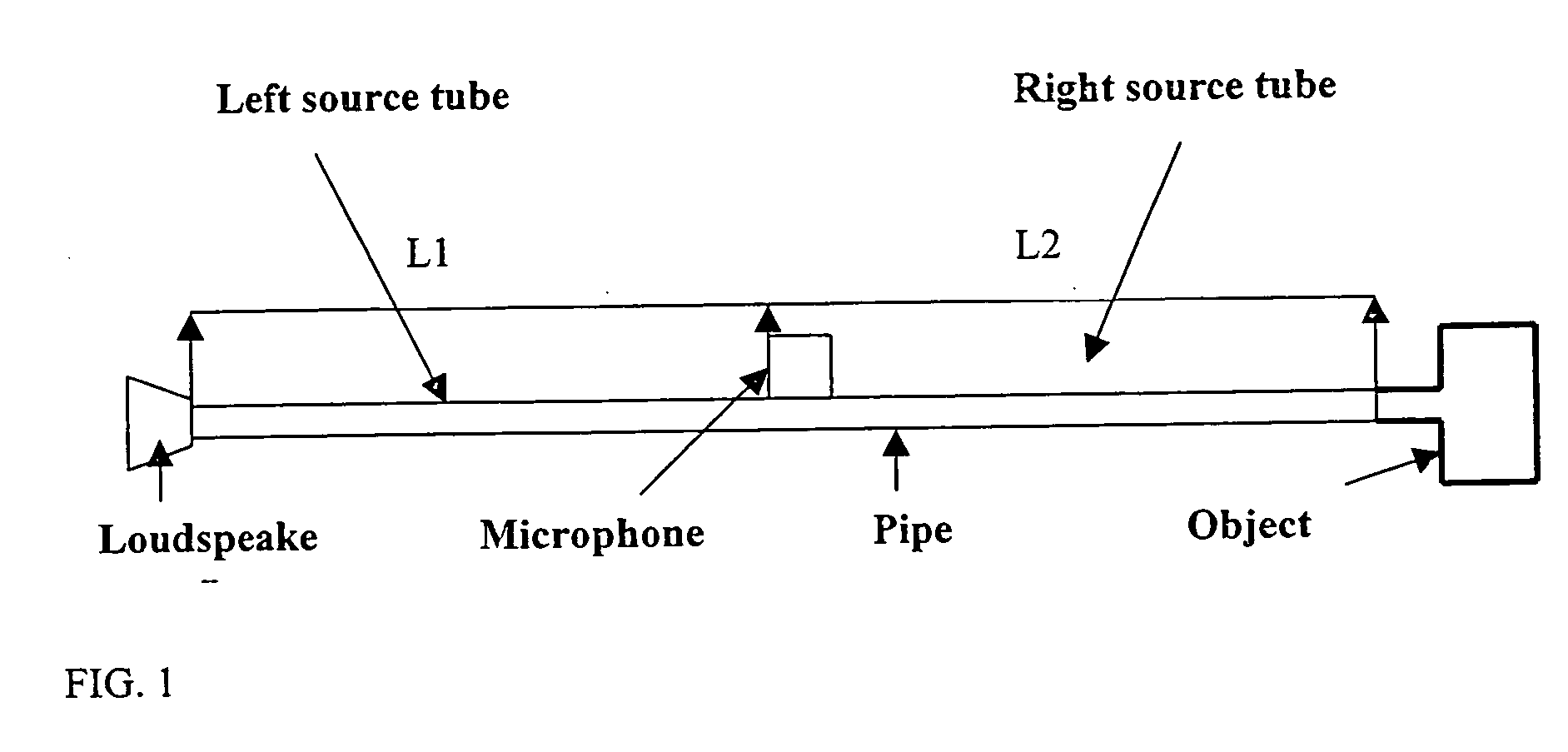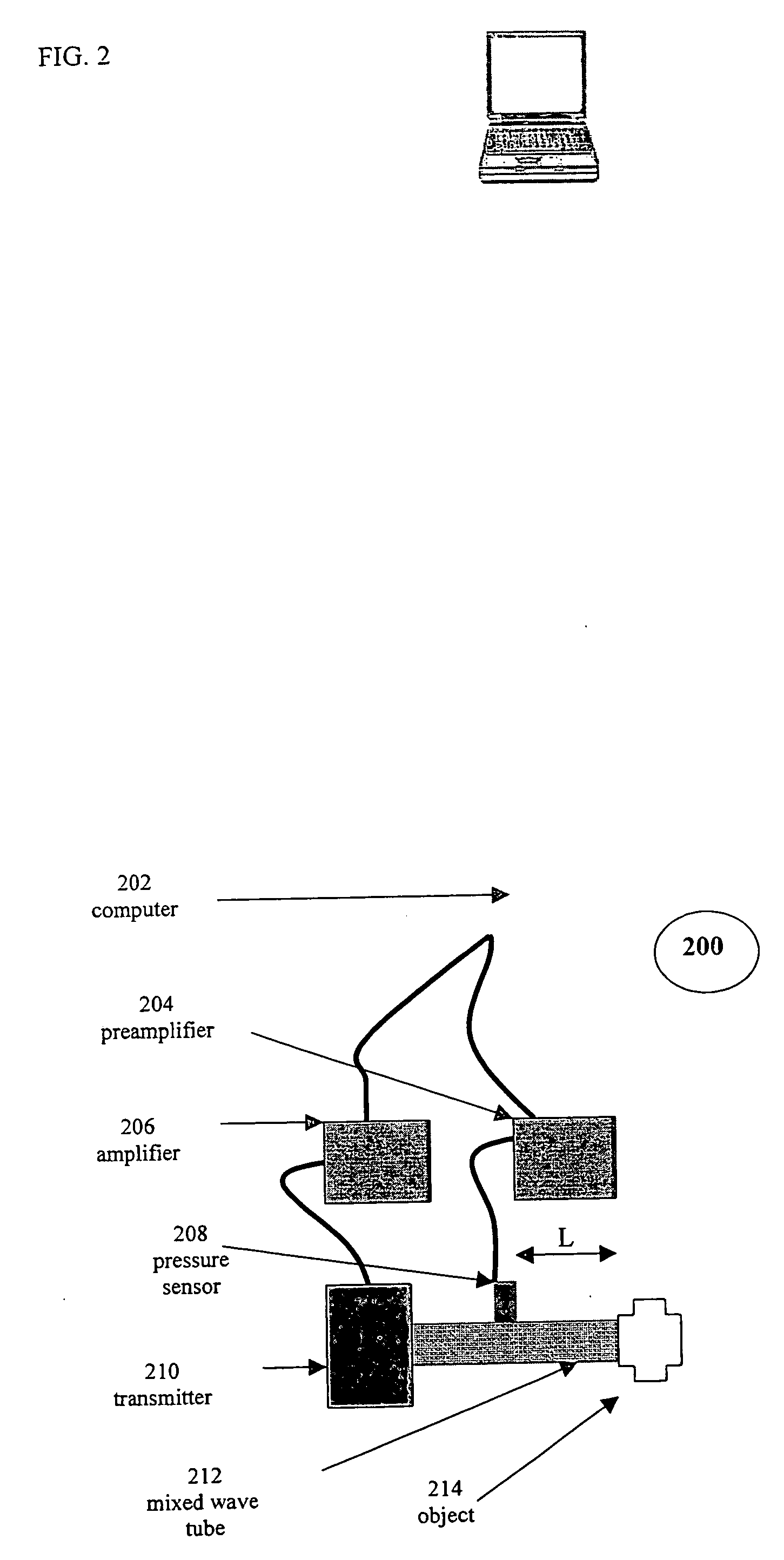Systems and methods for non-destructive testing of tubular systems
a tubular system and non-destructive testing technology, applied in the direction of sound producing devices, geological measurements, and analysing solids using sonic/ultrasonic/infrasonic waves. the effect of reducing the number of snrs
- Summary
- Abstract
- Description
- Claims
- Application Information
AI Technical Summary
Benefits of technology
Problems solved by technology
Method used
Image
Examples
Embodiment Construction
[0056] The present invention relates to APR systems used for non-destructive testing of tubular objects held at atmospheric pressure or high pressure or filled with an un-pressurized / pressurized liquid. In this description, “tubular system” and “tubular object” (or simply “object”) are used interchangeably. Examples of tubular systems are fuel and hydraulic pipes in airplanes, ships, or cars; air or gas filled tubular systems such as exhaust pipes, musical instruments, cooling systems such as heat exchangers, cooling systems or condensers in power plants; and drilled or cast cooling passages in casings and blocks.
[0057] As mentioned (Amir1), short tubes used in APR systems create a situation in which the successive reflections from the object and the loudspeaker overlap at the microphone. As discussed above, this creates a major difficulty in interpreting the measurements. A key inventive aspect of the invention includes combining the use of short tubes (termed hereinafter “mixed w...
PUM
| Property | Measurement | Unit |
|---|---|---|
| lengths L1 | aaaaa | aaaaa |
| lengths L1 | aaaaa | aaaaa |
| length | aaaaa | aaaaa |
Abstract
Description
Claims
Application Information
 Login to View More
Login to View More - R&D
- Intellectual Property
- Life Sciences
- Materials
- Tech Scout
- Unparalleled Data Quality
- Higher Quality Content
- 60% Fewer Hallucinations
Browse by: Latest US Patents, China's latest patents, Technical Efficacy Thesaurus, Application Domain, Technology Topic, Popular Technical Reports.
© 2025 PatSnap. All rights reserved.Legal|Privacy policy|Modern Slavery Act Transparency Statement|Sitemap|About US| Contact US: help@patsnap.com



